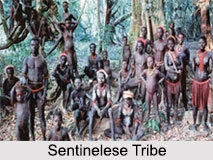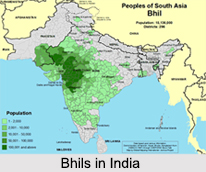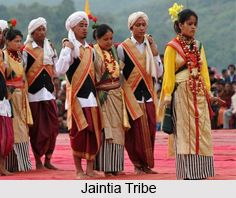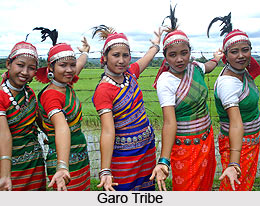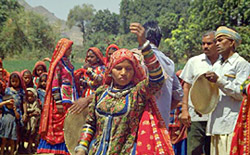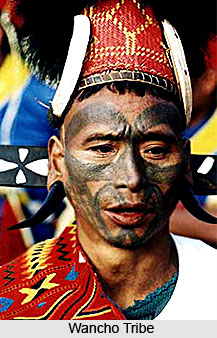 Tattoo is a decorative drawing that is common among most of the tribals in India. This is because the paint or other articles of decoration are not long lasting after application. For some tribes like the Gond and Baiga, tattoo is compulsory. In ancient times both males and females were tattooed. Presently among females it is more common; men hardly use it and even if it is used it is done partially.
Tattoo is a decorative drawing that is common among most of the tribals in India. This is because the paint or other articles of decoration are not long lasting after application. For some tribes like the Gond and Baiga, tattoo is compulsory. In ancient times both males and females were tattooed. Presently among females it is more common; men hardly use it and even if it is used it is done partially.
Beliefs Regarding Tattoos
There are many interpretations and beliefs as far as Tattoo art is considered. The motivating ideas behind tattooing vary from tribe to tribe. Some historians believe that these tribals work hard in all the seasons of the year bare-bodied and by applying tattoo a resistance power develops in their bodies.
Certain tribes mark the symbols of their gods and family gods due to some superstitious beliefs. They are of the opinion that their gods and goddesses will protect them if they do this. Again some believe that tattooing seems to have been a magical means of protecting the body against real and spiritual dangers. It is also considered that tattoos are done to identify the tribal clans.
Tattoo marked on a large part of the body prove that a girl`s parents might be rich or might have loved their daughter very much. The status of the wearer can be identified.
What ever may be the causes of tattooing it is a mode of body decoration. It has a widespread popularity as it is long lasting. The richness of tattooing proves the artistic awareness of the wearer.
Characteristics of Tribal Tattoo
As far as the Gond tribes are concerned Tattoo art is a matter of prestige to them. They do it to flaunt their status. It has been seen that folk songs are sung while tattoo is being performed. It shows that Tattooing is a significant occasion as well as tattoo is a symbol of fortune for their life.
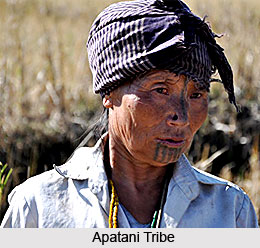 The tattoo marks have religious significance as well as possess a magical power. Clan images are depicted through these Tattoos also. The tribes consider it as a decoration of body or ornament that remains throughout the life. After death, this is the only ornament that goes along with the body. The creative aspect of a tattoo cannot be ignored. Simple lines, dots, circles and triangles produce several simple and decorative forms.
The tattoo marks have religious significance as well as possess a magical power. Clan images are depicted through these Tattoos also. The tribes consider it as a decoration of body or ornament that remains throughout the life. After death, this is the only ornament that goes along with the body. The creative aspect of a tattoo cannot be ignored. Simple lines, dots, circles and triangles produce several simple and decorative forms.
The longing of decoration is very acute and the complexion does not affect the beauty of a tattoo. While tattoo marks prove the financial status of the girl`s family, at the same time, it is a means of attracting the lover and arousing the love feeling in the heart of the latter. Generally ladies are the Tattooists. The regional characteristic of the tattoo marks are distinguishable from others. A perfect local technique is also required and it involves accuracy and symmetry in patterns.
Some tribes like the Oraon tribe make tattoos that are more refined and it has a systematic layout with symmetry and order in the repetition of pattern in a uniform way. These are more skilful and more rigid in their style. Some tattoos are less rich in variety and are based on few dots and small lines with leaf-like patterns. Among the north eastern tribes of Nagaland, patterns often appear in their shawl-like designs. Apatani tribe of Arunachal Pradesh was tattooing its womenfolk to make them unattractive to rival tribes in neighbouring districts, who might otherwise abduct pretty women. The headhunting Konyaks of Nagaland used to tattoo their faces like headhunters. Facial tattoos were marks of the head-taker, the various designs indicating the person`s prowess in battle and his head-count. Facial tattooing was prevalent among Noctes and Wancho tribe of Arunachal as well. The married women of the Singpho tribe found both in Assam and Arunachal were tattooed on both legs from the ankle to the knee, while the men tattooed their limbs, while unmarried Singpho girls were barred from wearing a tattoo.
The process of tattooing is painful and requires patience. Their accommodating power, acceptance of incomplete creation at various stages of life, shows the devotion and lust for art. Their tattoos are quite original and representational with their distinctive characteristics.
Tattoo art is simply not a custom but entire tribal life is influenced with its power. With the limited means of locally developed technical process tribals have developed a high degree of physio-visual art. This art has given way to creativity and tribals have symbolized legends, animals, birds and nature in several motifs.

















